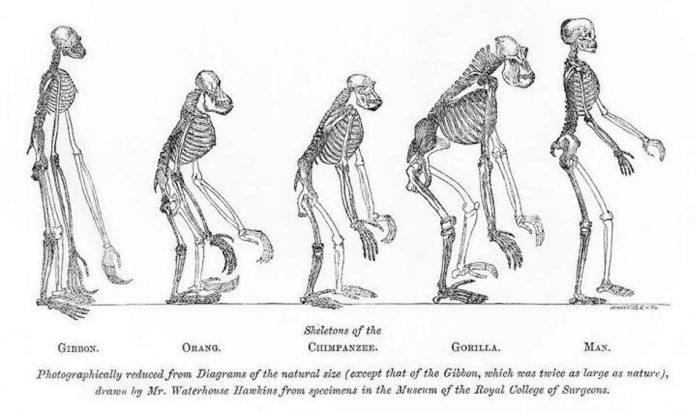Foreword
This is a run-up to the Sarmatians and Scythians of the western writers and Zhou of the Chinese chroniclers. The offered citations from the 2010 dissertation
The offered unique, in the assessment of the authors, work offers materials and analyses of the people labelled “Sarmatians” and “Late Sarmatians”, a preliminary genetical preview of whom was produced by Dr Joachim Burger Mamas of Pokrovka Sarmatians, equipped with maps showing where the people could have come from.
The extensive anthropological study of the Pokrovka-10 burials finds the local women occupying a majority of the female slots under kurgans, their male tribesmen buried elsewhere, and their place was taken by the migrant newcomers from S.Siberia and Kazakhstan.
The genetic analysis of mamas tells that either only most dedicated husbands dragged their sweethearts with them half away across Eurasia, otherwise finding suitable spouses locally, or that only selected few women belonging to the local highest elite could get a ticket for a place under kurgan.
Both works solidly corroborate each other, coming from entirely different directions to identical conclusions, and that includes the source of the sample series. However, because Pokrovka is just one of many thousands of kurgan burials, it allows only a statistically insignificant peek into history, and can be dismissed as an aberration in the whole picture of some particular-type theories.
Much more honest and scrupulous research is needed. Many elements of that work are listed in the Bibliography section of the article.
Content
Introduction
Chapter 1. Material, methods and research methodology
1.1. Paleoanthropological database of southern Siberia and adjacent territories in the study
1.2. Methods used
1.3. The methodology of the study. Main factors in transformations of human anthropological composition
1.3.1. Anthropological discreteness of humanity
1.3.2. Anthropological differentiation structure of humanity
1.3.3. Environmental variability of human populations as the leading factor in anthropological differentiation of humanity
1.3.4. Social factors of anthropological differentiating of humanity
1.3.5. Anthropological differentiation of mankind as a historical process
Chapter 2. General geographical, historical, cultural, and anthropological assessment of the Western Siberia southern area
2.1. Ecological and geographic characteristics of the Western Siberia southern region and the dynamics of physical and geographical conditions of the environment in the Neolithic – Early Iron Age
2.1.1. Interactive peculiarities of the geographical environment and human populations
2.1.2. Review of modern landscape in the Western Siberia southern region
2.1.3. Dynamics of paleoclimatic changes in some areas of the Western Siberia southern region
2.2. General patterns and regional trends in historical, cultural, and race-forming processes in the Western Siberia southern regions
2.2.1. Stone Age and the transition to the Era of paleometal
2.2.2. Early Metal Period
2.2.3. Early Bronze Age
2.2.4. Middle Bronze Age
2.2.5. Late Bronze Age
2.2.6. Early Iron Age
Chapter 3. Anthropology of the Western Siberia southern region population in the Neolithic and Early Metal Period
3.1. Cranial features in Neolithic of the Western Siberia southern region populations
3.1.1. The population of Altai-Sayan upland
3.1.2. The population of Baraba steppe
3.1.3. Shaping of anthropological composition in Neolithic of the Western Siberia southern region population according to craniology
3.2. Cranial traits of the Western Siberia southern region population in the Early Metal Period
3.2.1. The population of Altai-Sayan upland
3.2.2. The population of Baraba steppe
3.2.3. Shaping of the anthropological composition of the Western Siberia southern regions in the Early Metal Period according to craniology
3.3. Odontological traits of the Western Siberia southern regions population in the Neolithic Era and Early Metal Period
Chapter 4. Anthropology of the Western Siberia southern region population in Bronze Age
4.1. The population of the West Siberian Plain southern area in Bronze Age according to anthropology
4.1.1. The population of Odinov Culture
4.1.2. The population of Krotov Culture
4.1.3. The population of Andronov (Fedorov) Culture
4.1.4. The population of Irmen Culture
4.1.5. People from so-called “Late Bronze Age Culture” Old Garden and Preobrajenka burials
4.2. The population of the Middle Bronze Age Altai Mountains according to anthropology
4.2.1. The population of Karakol Culture
4.2.2. Individuals from Bertek burial complex
Chapter 5. Anthropology of the Altai-Sayan highlands population in Early Iron Age
5.1. Anthropological description of the Altai Mountains Early Nomads
5.1.1. Composition of surveyed paleoanthropological material from Pazyryk Culture and its paleodemographic description
5.1.2. Craniometric traits variations of the Altai Mountains Early Nomads
5.1.3. Odontological features of Gorny Altai Early Nomads
5.1.4. The shaping of Early Nomads’ anthropological composition in Gorny Altai
5.2. Anthropological description of Tuva Early Nomads
5.2.1. Composition of surveyed paleoanthropological material on Early Nomads of Tuva and its paleodemographic description
5.2.2. Variations in craniometric traits of Tuva Early Nomads
5.2.3. Odontological features of Tuva Early Nomads
5.2.4. The shaping of Early Nomads’ anthropological composition in Tuva
Chapter 6. Regional and local territorial aspects in shaping the anthropological composition of Southern Siberia ancient population in the light of anthropological and paleogenetics studies

